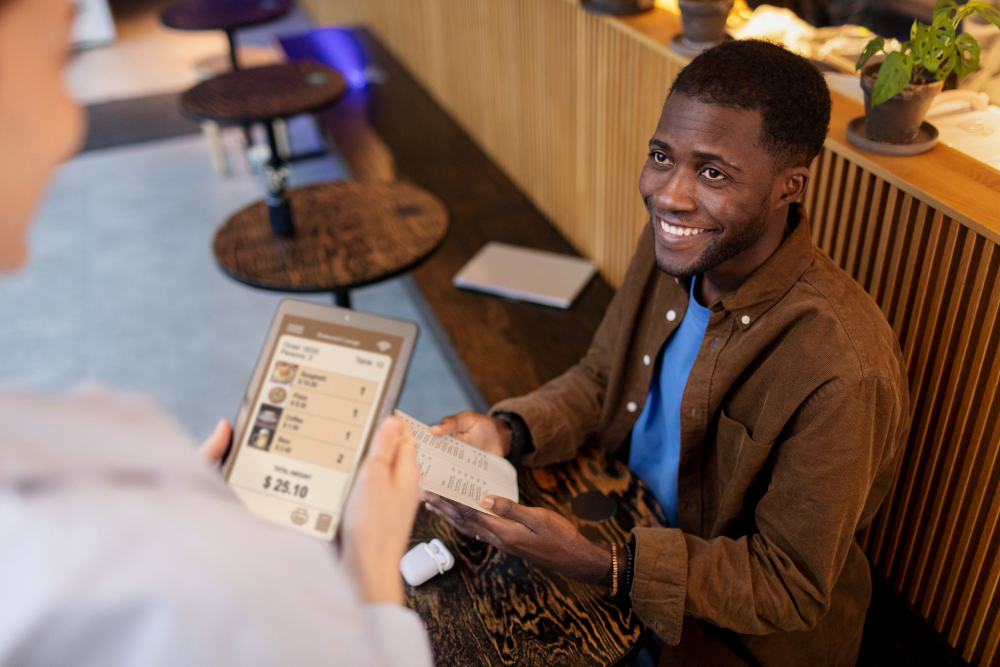In today’s world of business, which is social-media-driven, we’re constantly reminded that branding is everything. Companies spend millions on logos, taglines, color palettes, influencer partnerships, and visually aesthetic campaigns to stand out in a crowded marketplace.
But beneath all the gloss, there’s a growing realization in the business world: you can’t outbrand bad customer service.
No matter how sleek your visuals are or how loud your marketing sounds, what customers truly remember—and return for—is how your business made them feel. That’s where customer relations and retention beat branding hands down.
So, while branding might win eyeballs, customer experience wins hearts. And in business, hearts are worth more than hype.
How Branding Grabs Attention, But Relationships Build Loyalty
Good branding is like a beautifully wrapped gift. It entices you to take a closer look. It draws you in. But if the contents of that package are disappointing, you’re unlikely to return, no matter how pretty the box was.
In contrast, great customer service might come in modest packaging, but the experience inside is memorable and personal.
Think about your favorite restaurant or hairdresser. Chances are, you love them not just for their logo or online ads, but because of how they treat you—how they remember your name, your preferences, or that time you had a special request and they went the extra mile.

It’s easy to get excited about a brand’s first impression. But loyalty—the kind that translates to repeat purchases, word-of-mouth referrals, and long-term business growth—comes from consistency, care, and connection.
People Forget Ads, But They Remember How You Made Them Feel
Psychologist and author Maya Angelou famously said, “People will forget what you said. People will forget what you did. But people will never forget how you made them feel.” This is especially true in business.
A flashy rebrand might trend on Twitter for a day, but the warm smile of a barista who remembers your order? That sticks. A luxury store might dazzle with marble floors and elegant signage, but it’s a personal call to check on a delayed item that builds loyalty.
Human beings are emotional creatures. We crave connection. So, when a business delivers not just a product but a feeling—safety, trust, respect—it wins a spot in the customer’s life.
That emotional connection becomes more powerful than any branding strategy.
Customer Experience is the New Marketing
Let’s take a closer look at how customers actually decide what brands to stick with. Studies have shown that:
• 86% of buyers are willing to pay more for a better customer experience (PwC )
• Loyal customers are five times more likely to repurchase, and four times more likely to refer a friend (Temkin Group via Qualtrics ).
• A customer who has a positive experience with a company tells 9 people on average, while a dissatisfied one tells 16.
What does this mean? Your customers are your greatest marketing team. Their experiences become the real brand story—one that spreads more organically and more persuasively than any ad campaign ever could.
In essence, customer experience is the branding.
Word of Mouth Isn’t Built on Design—It’s Built on Experience
We live in an age of reviews, recommendations, and social proof. Before making a purchase, consumers turn to Google Reviews, YouTube testimonials, TikTok hauls, and Reddit threads to hear what real people are saying.
And guess what? No one is raving about a brand’s typeface or the shade of blue on its logo.
They’re talking about:
• How quickly a company responded to their complaint.
• How patient and helpful the support team was.
• Whether the return policy was hassle-free.
• How the product exceeded (or fell short of) expectations.
This organic chatter is rooted in experience—not aesthetics. It’s not about how the brand looks. It’s about how it behaves.
Retention Is Cheaper—and Smarter—Than Acquisition
Brands often get caught in the loop of trying to attract new customers while neglecting existing ones. But that strategy is both costly and inefficient.
According to Harvard Business Review:
• Acquiring a new customer can be 5 to 25 times more expensive than retaining an existing one.
• Increasing customer retention rates by just 5% can increase profits by 25% to 95%.
Here’s why:
Retained customers already know your product. They trust you. They’re more likely to spend more, refer friends, and forgive minor mistakes because you’ve earned goodwill.
So while branding may bring people to the door, it’s your relationship with them that keeps them inside—and willing to come back.
Personalization Beats Presentation
Customers are drawn to brands that see them, not just as buyers, but as individuals.
Consider how Amazon remembers your browsing habits, or how Spotify curates a playlist just for you. This kind of personalization deepens customer engagement and enhances satisfaction.
Now contrast that with a business that rolls out an expensive rebranding campaign but still sends you generic emails, ignores your feedback, or offers no real customer support.
Personalization is the new premium. It’s not about being fancy—it’s about being relevant, responsive, and real.
Relationships Can’t Be Copied—Branding Can
Here’s the truth about branding: it can be replicated. Competitors can copy your color scheme, tone of voice, or even your product design. But what can’t be replicated is your customer relationships.
You can’t fake:
• That cashier who knows a regular’s name.
• The founder who personally replies to emails.
• That small business that sends handwritten thank-you notes.
These gestures create emotional moats around your brand. They humanize your business and foster loyalty that no ad agency can manufacture. Customer-Centric Brands Last Longer

Let’s look at real-world examples.
Zappos
The online shoe retailer became famous not for its marketing stunts but for its obsessive customer service. Stories abound of reps spending hours helping a customer or overnighting shoes for a wedding emergency, free of charge. Their brand was built on service, not slogans. Explore how Zappos became a customer service icon.
Amazon
Love it or hate it, Amazon’s rise wasn’t just about fast shipping or low prices. It was about customer obsession. Easy returns, 24/7 chat support, and personalized recommendations made it the go-to retailer for millions. Discover how Amazon built customer loyalty through service.
Local Cafés and Family-Owned Businesses
Ask any loyal customer why they keep returning to their neighborhood café or local tailor, and you’ll hear about people, not branding. “They remember my order.” “They ask how my kids are doing.” “They really care.” That’s the secret sauce. When Branding and Customer Experience Align, Magic Happens. Small businesses thrive by focusing on relationships, not just profits.
Let’s be clear: branding isn’t bad. A strong brand identity helps create recognition, set expectations, and carve out a place in the market. The issue is when businesses rely on branding alone, while their customer relations fall flat.
The most successful brands marry great design with even greater service. Think Apple. Sure, they have one of the world’s most iconic logos, but their intuitive user experience and Genius Bar support fuel customer loyalty. See how Apple combines innovation with customer care.
The Social Media Mirage: Why Engagement Doesn’t Equal Loyalty
Many brands confuse likes with loyalty. A viral post might give you 10k new followers, but that doesn’t mean you have 10k new customers.

Engagement on social media is fleeting. But a great customer experience can turn a single transaction into a long-term relationship.
Engagement on social media is fleeting. But a great customer experience can turn a single transaction into a long-term relationship. Real brand equity is built through meaningful connections, not likes
Instead of obsessing over algorithms, brands should focus on authenticity:
• Respond to DMs with care. See how to create authentic customer interactions
• Solve problems quickly. explore why fast support builds loyalty.
• Celebrate loyal customers publicly. Learn how brands reward customer loyalty effectively.
• Listen to feedback—both good and bad. Discover how to handle and benefit from customer feedback.
That’s where the real influence lies.
Build a Brand Around People, Not Just a Logo
In a marketplace flooded with options and distractions, the businesses that thrive long-term are those that connect, not just convert. They understand that customers are not metrics—they’re people with emotions, needs, and expectations. Read why emotional connection is key to customer retention.
So before you invest in a new logo, a shiny campaign, or the next branding trend, ask yourself:
• Are your customers truly satisfied? Use tools to measure and improve customer satisfaction
• Do they feel seen, heard, and valued? See how brands build emotional loyalty
• Would they recommend you, not because of how you look, but because of how you made them feel?
Because in the end, no branding beats great customer relations and retention. It’s not the colors on your storefront or the font on your website that people remember. It’s the way you made their lives just a little bit better. And that, more than anything, is what branding should be about.



1 Comment
Pingback: 7 Powerful Ways Phygital Experiences Are Transforming Retail and E-Commerce in 2025 - Magic Media